Abstract
An introductory analysis is provided for the two-phase macroscopic kinetic model of the end of a microtubule. Some general relations are derived for one end of a very long microtubule in solution but the main results refer to the steady-state properties of microtubules grown on nucleated sites, as in the experiments of Mitchison and Kirschner [Mitchison, T. & Kirschner, M. W. (1984) Nature (London), in press]. The two-phase model makes it possible to understand qualitatively how long microtubules can grow well below the critical concentration and also how grown microtubules can rapidly disappear from a nucleated site by shortening following a phase change.
Full text
PDF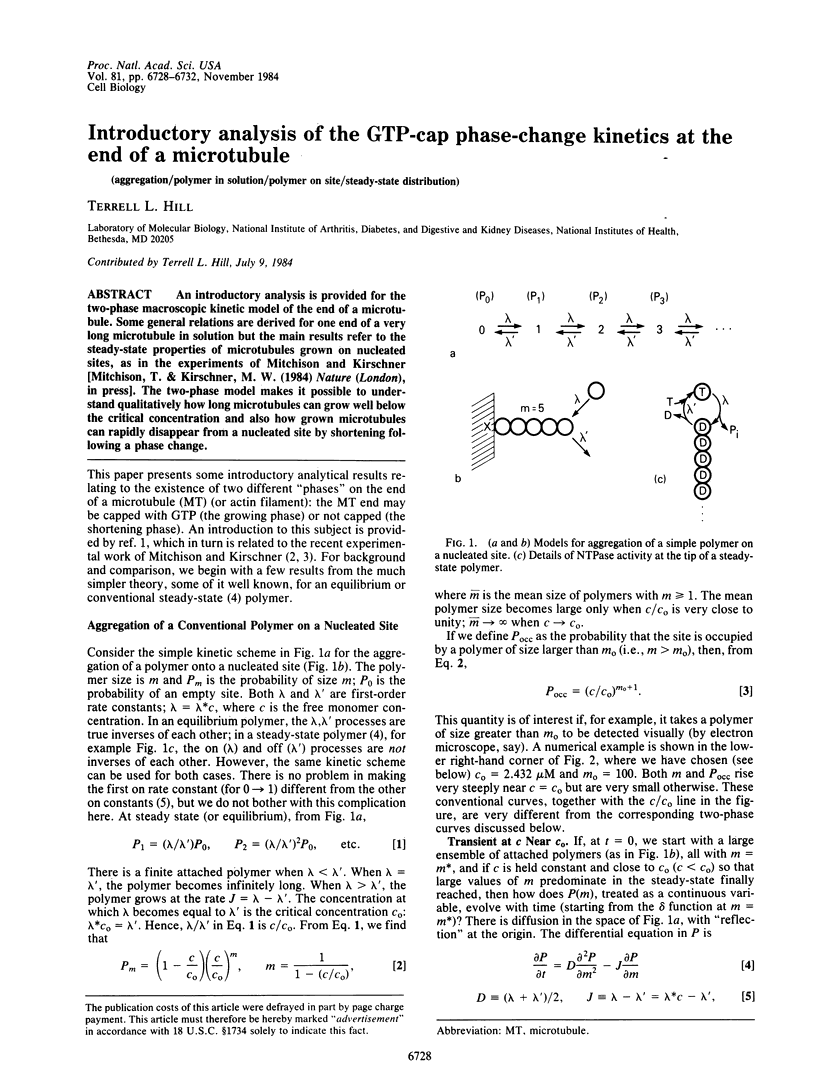
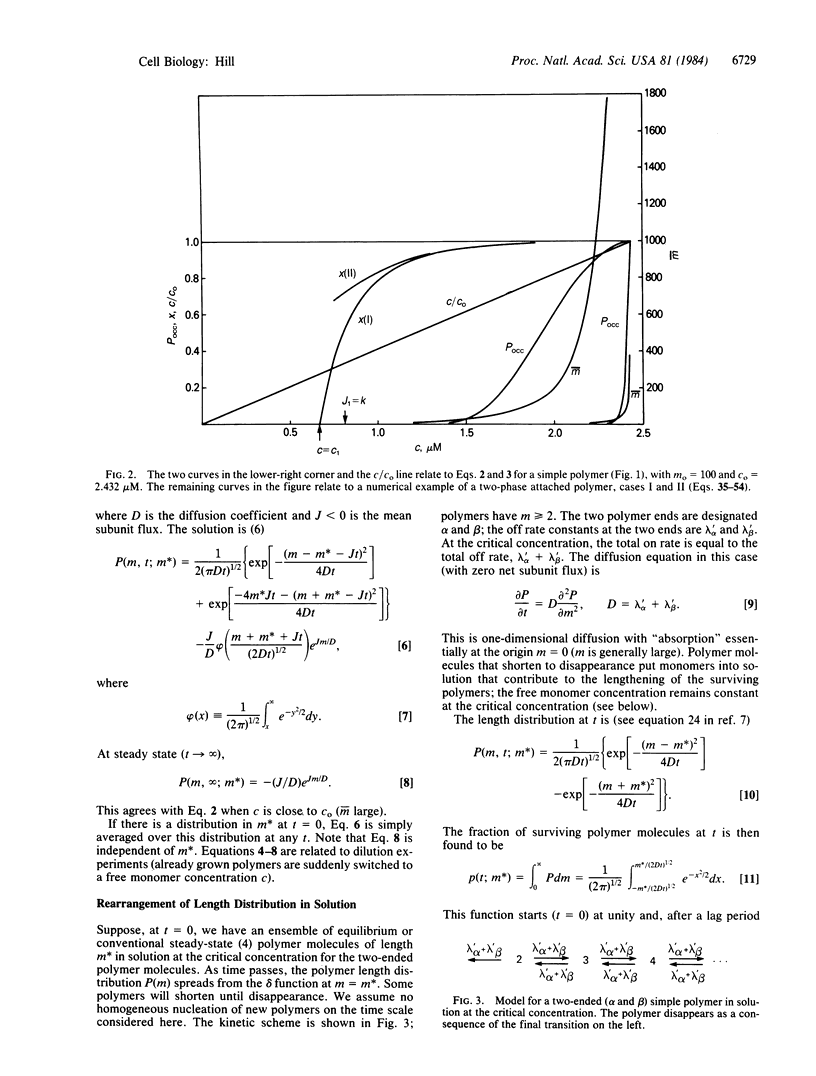
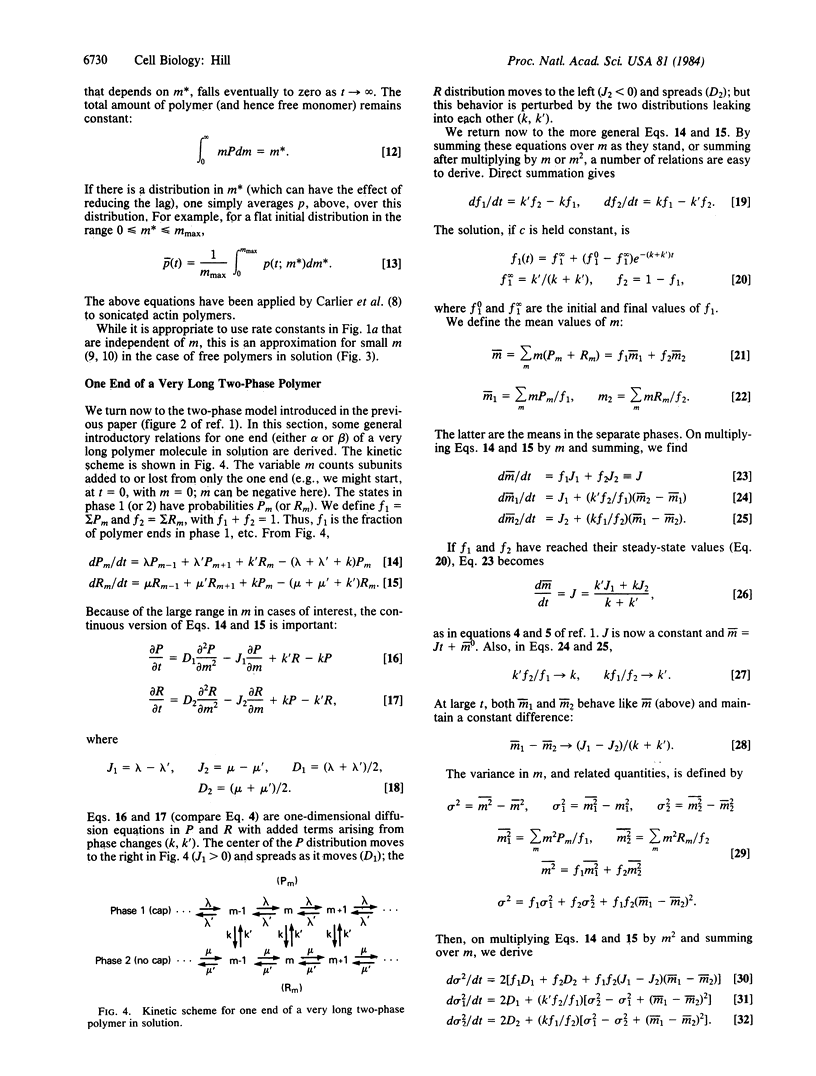
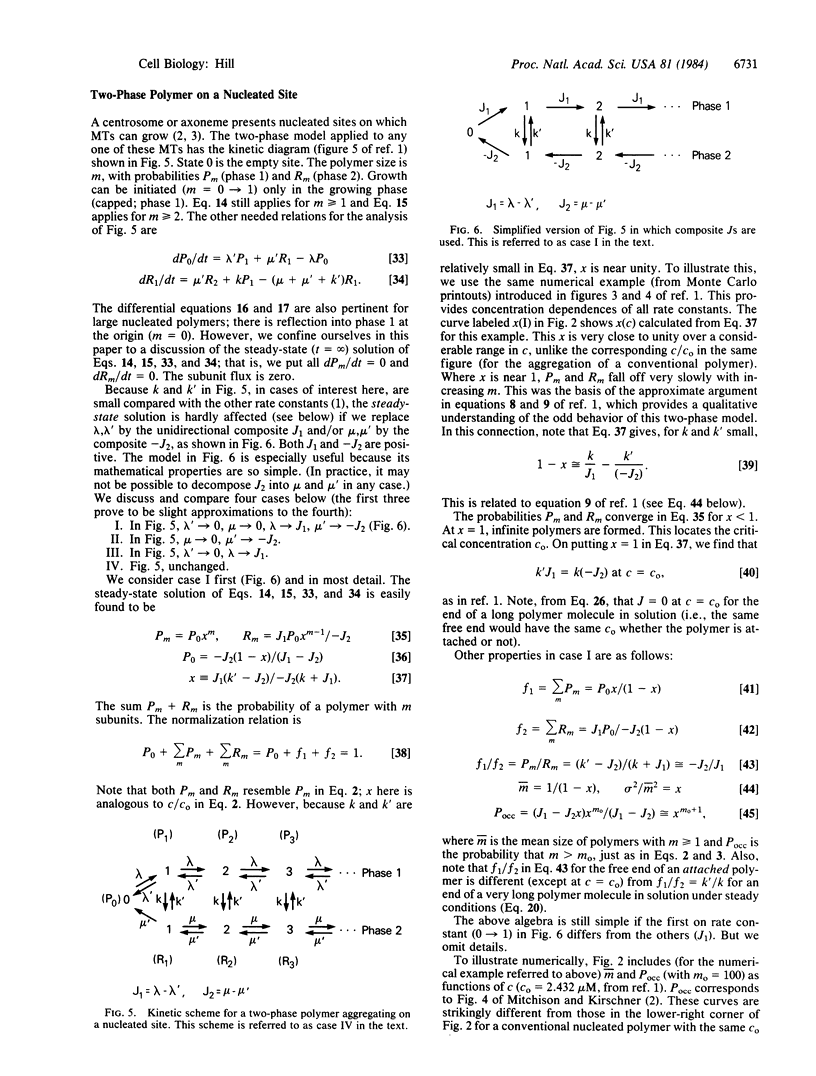
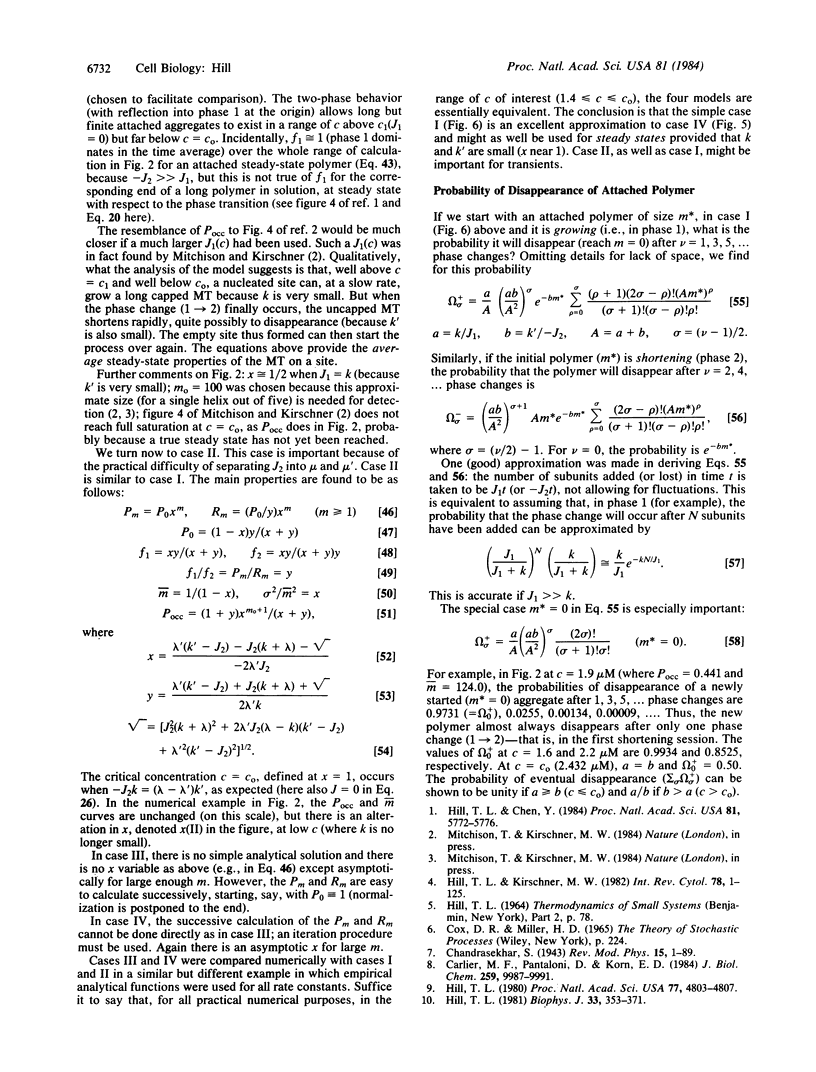
Selected References
These references are in PubMed. This may not be the complete list of references from this article.
- Carlier M. F., Pantaloni D., Korn E. D. Steady state length distribution of F-actin under controlled fragmentation and mechanism of length redistribution following fragmentation. J Biol Chem. 1984 Aug 25;259(16):9987–9991. [PubMed] [Google Scholar]
- Hill T. L. Bioenergetic aspects and polymer length distribution in steady-state head-to-tail polymerization of actin or microtubules. Proc Natl Acad Sci U S A. 1980 Aug;77(8):4803–4807. doi: 10.1073/pnas.77.8.4803. [DOI] [PMC free article] [PubMed] [Google Scholar]
- Hill T. L., Chen Y. Phase changes at the end of a microtubule with a GTP cap. Proc Natl Acad Sci U S A. 1984 Sep;81(18):5772–5776. doi: 10.1073/pnas.81.18.5772. [DOI] [PMC free article] [PubMed] [Google Scholar]
- Hill T. L. Steady-state head-to-tail polymerization of actin or microtubules. II. Two-state and three-state kinetic cycles. Biophys J. 1981 Mar;33(3):353–371. doi: 10.1016/S0006-3495(81)84900-4. [DOI] [PMC free article] [PubMed] [Google Scholar]


